How it all started and where we are today…
Ligamentpain.com came about after 25 years of treating patients as a Canadian trained Registered Massage Therapist and also from suffering with my own injuries.
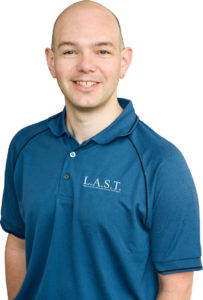
As clinicians, we see people every day who are suffering with some type of pain, discomfort or dysfunction after some kind of injury. People are searching for knowledge that helps them recover as best as possible or habituate to a new normal.
The information on Ligamentous and joint tissue pain referral patterns presented in my book and posters was missing from my formal education, and sadly continues to be absent from many medical curriculums today.
My interest into these patterns began in 1994, my first year of practice. My Patients were describing pain/discomfort patterns that were different from the typical Dermatome and Travell trigger point patterns. While documenting these patterns, I recognised a connection with joint tissue injuries.
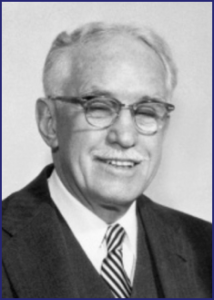
My investigation of published research lead me to Dr. George Hackett M.D. Dr. Hackett researched ligamentous injuries, their pain referral patterns, and treatment with prolotherapy. His almost twenty years of combined research and treatments amounted to nearly 18,000 intraligamentous injections to over 1,656 patients. In 1956, Dr. Hackett published his book Ligament and Tendon Relaxation Treatment by Prolotherapy, documenting for the first time ligament pain referral patterns for the axial skeleton.
Dr. Hackett described the pain referral patterns for the spine, pelvis, and hip, but not for the peripheral joints. Therefore, I began an extensive search for published research documenting the patterns for the peripheral joint tissues.
I began a complete review of the referral patterns, acquiring research and information from researchers such as Bogduk, Dreyfuss, Michaelsen, Fletcher, Cooper, Bailey, Lord, Dwyer, Aprill, and Fukui to name a few. Many texts on Anesthesiology, Neurological and Denervation techniques were also utilized in identifying, understanding and documenting the patterns.
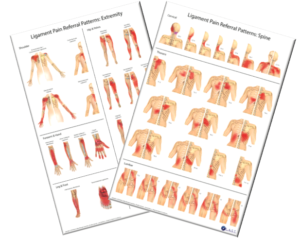
Although I greatly appreciated the referral pattern images contained in the documented research, in my opinion, more realistic examples were needed. I hired an anatomy illustrator who has a passion for providing detailed anatomical images, and together we deciphered the referral patterns described in the texts and research.
In 2012, I released Ligament Pain Referral Pattern Posters depicting these images for the whole body. In 2015, I began a complete review of the referral patterns and 2016 saw the revision, creation, and addition of nearly thirty new images, all based on published research. In 2020, the Ligament Pain Referral Pattern text book was published.
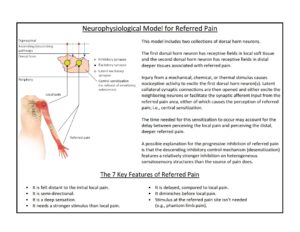
The text book not only contains the patterns and research documenting them, but also contains knowledge of the physiological mechanism of referred pain. This research is from Professor Thomas Graven-Nielsen from The Faculty of Medicine Center for Sensory-Motor Interaction Pain and Motor System Plasticity and the Center for Neuroplasticity and Pain. He generously provided me with his research paper, Fundamentals of Muscle Pain, Referred Pain, and Deep Tissue Hyperalgesia.
There is vast knowledge of the neurological innervations of the skin and muscles, but knowledge of the specific nerve roots and nerves that innervate ligaments and joint tissues is not readily available. Through my search of neurological, anesthesiology, and denervation texts, no one accumulative chart seemed to exist.
Acquiring this information has been an all-consuming task required countless hours of scouring research papers and texts and following their references to acquire even just one piece of the puzzle. This project is a continuous journey.
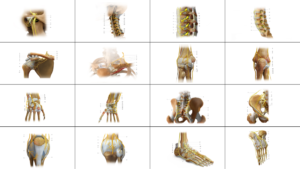
Contained within the text book, I have provided for each joint of the body, the nerve root, the nerve, the joint tissue it innervates, and references. Original images accurately depicting the specific joint innervations along with their neurological innervation chart can be found at the beginning of each pain referral chapter.
It is my sincere hope that with this information, you will be able to provide knowledge, and education to your patients and others you communicate with.
“While explanations change, new information is often simply a rephrasing and a refining of descriptions of mechanisms. In the end, it may not change what we do clinically by a great deal—or at all.” – Leon Chaitow ND, DO
Robert